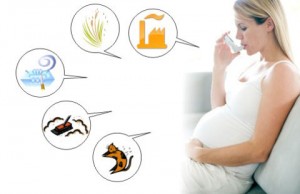Pregnancy and Asthma. What’s the solution?

Air pollution poses serious health risks to pregnant women and their babies. Pollution particles in the air, chemicals, gases and other air contaminants can affect birth weight and cause other health problems for mothers and babies. Don’t panic. Most (though not all) of the airborne contaminants associated with air purifier can be controlled in the indoor environment by using a high-quality air purifier.
Particle air pollution, paint fumes and volatile organic compounds (VOCs) and other forms of pollutants can be controlled indoors through the use of a reliable air purifier. Pregnant women and new mothers who live in areas with high levels of air pollution, for example, near a freeway or industrial clusters should be proactive to protect themselves and their babies from the dangers in the air they breathe. An effective air purifier in the home should be part of the strategy.
One of the most effective room air purifiers for this issue is the HEAP filters. HEPA filtration technology removes more than 99.97% of all particles in the air. It is also proven effective against tiny ultrafine particles that other air cleaners ignore. For homes where secondhand smoke or chemicals and gases are an issue, air purifiers with advanced gas and chemical filtration are highly recommended.
Equally important is avoiding air pollutants whenever possible. Examples of pollutants to be avoided include tobacco smoke, paint fumes and cleaning products. Mothers and babies, like everyone else, should avoid unnecessary exposure to ozone as well, and dangerous ozone-generating air cleaners should never be used. Pregnant women and new mothers should also avoid unnecessary exposure to carbon monoxide, a component of air pollution that air purifiers cannot effectively filter.


